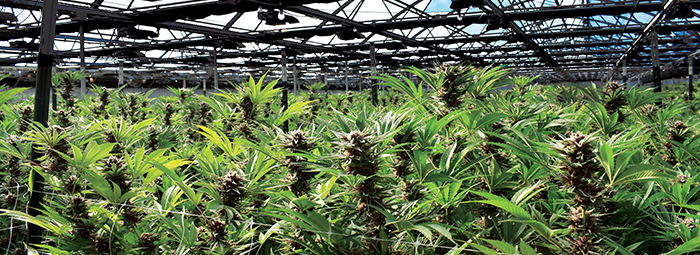
©2020 This excerpt taken from the article of the same name which appeared in ASHRAE Journal, vol. 62, no. 4, April 2020.
About the Author
Mary Kate McGowan, Associate Editor, News
The cannabis industry is blooming. With the expected trend of increasing legalization, the demand for energy-efficient grow houses with effective climate control will increase. From temperature to humidity to light loads, cannabis grow houses require accurate HVAC load calculations to yield profitable crops.
HVAC load calculations are a fundamental consideration because HVAC systems indirectly control plant responses such as leaf temperature and transpiration—which affects photosynthesis—water and nutrient delivery, plant quality and growth rate, said Nadia Sabeh, Ph.D., P.E., Member ASHRAE, president of Dr. Greenhouse, Inc.
“Load calculations are where everything begins,” she said. “If you don’t get the load calculations right, you’re not going to get the equipment sizing right. You’re not going to get the equipment selection right. You’re not going to get the equipment operation right, and growers are going to really struggle to control not just temperature, but also humidity and airflow.”
Plants Are Not People
Plants are not people, data servers or hospital rooms, said Sabeh, and this could affect how engineers approach grow facilities. Cannabis is a plant. Plants are living, dynamic organisms that grow from a seed or small seedling plant to full maturity. This introduces challenges for engineers designing and selecting HVAC equipment for grow houses.
Because plants grow and evolve, engineers must be able to design, manufacture and develop equipment that can respond to a changing environment over the course of a plant’s life, she said.
“We need monitoring and control systems and equipment that can respond to and predict the changes in the environment,” said Sabeh.
Common Challenges
HVAC loads for conventional office buildings, said Stephen Roth, P.E., Member ASHRAE, president of Carmel Software.
“When calculating HVAC loads for office buildings, sensible loads are the driving force for calculating total loads, determining airflow, and for equipment selection. When calculating HVAC loads for grow facilities, latent loads are the driving force.
Therefore, using a conventional load calculation software tool for grow facilities may produce inaccurate results,” he said.
Roth said designers need to consider peak HVAC loads for different stages of the plant.
“Cooling dry-bulb and relative humidity setpoints will be higher when plants are smaller. When the plants get bigger, relative humidity setpoints will decrease,” he said. “Different grow room types will require their own individual HVAC systems too.”
This among other grow facility characteristics affect the buildings’ loads.
Sensible and Latent Loads
Adding the sensible and latent loads together is a common error designers make when calculating loads for cannabis grow facilities, said Sabeh.
Engineers rarely consider the fact that the plants often act as their own mini-evaporative coolers, said Roth. This means the plants themselves cool the air, so the total calculated sensible load for sizing equipment must be reduced by the amount of sensible cooling the plants provide, he said.
Read the Full Article
ASHRAE Members have free access to the full-text PDF of this article as well as the complete ASHRAE Journal archives back to 1997 in the Free Member Access Area.
Non-members can purchase features from the ASHRAE Bookstore. Or, Join ASHRAE!
Return to Featured Article Excerpts
Return to ASHRAE Journal Featured Article Excerpts